Funnels
Overview
Funnels provide a way to view a series of events that occurred during a customer's interaction with your organization. Funnels can be found within the Insights section within Reports.
Each Funnel is defined as a series of Steps. Each step is defined to be a certain type of event or action, and each Step of the funnel is a subset of the journeys that completed it, as well as the previous step.
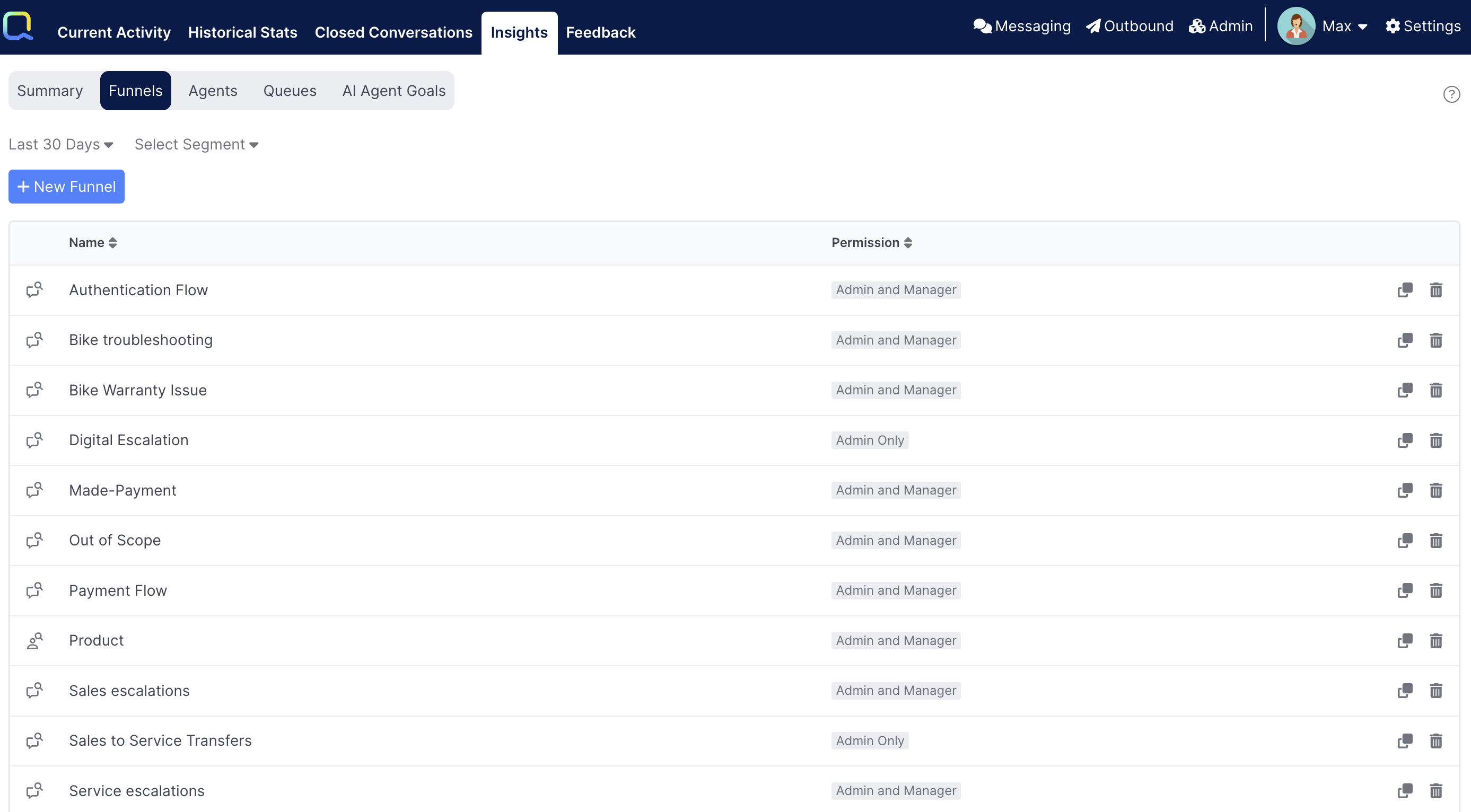
Elements of a Funnel
Selecting a Funnel from the list will open it for display:
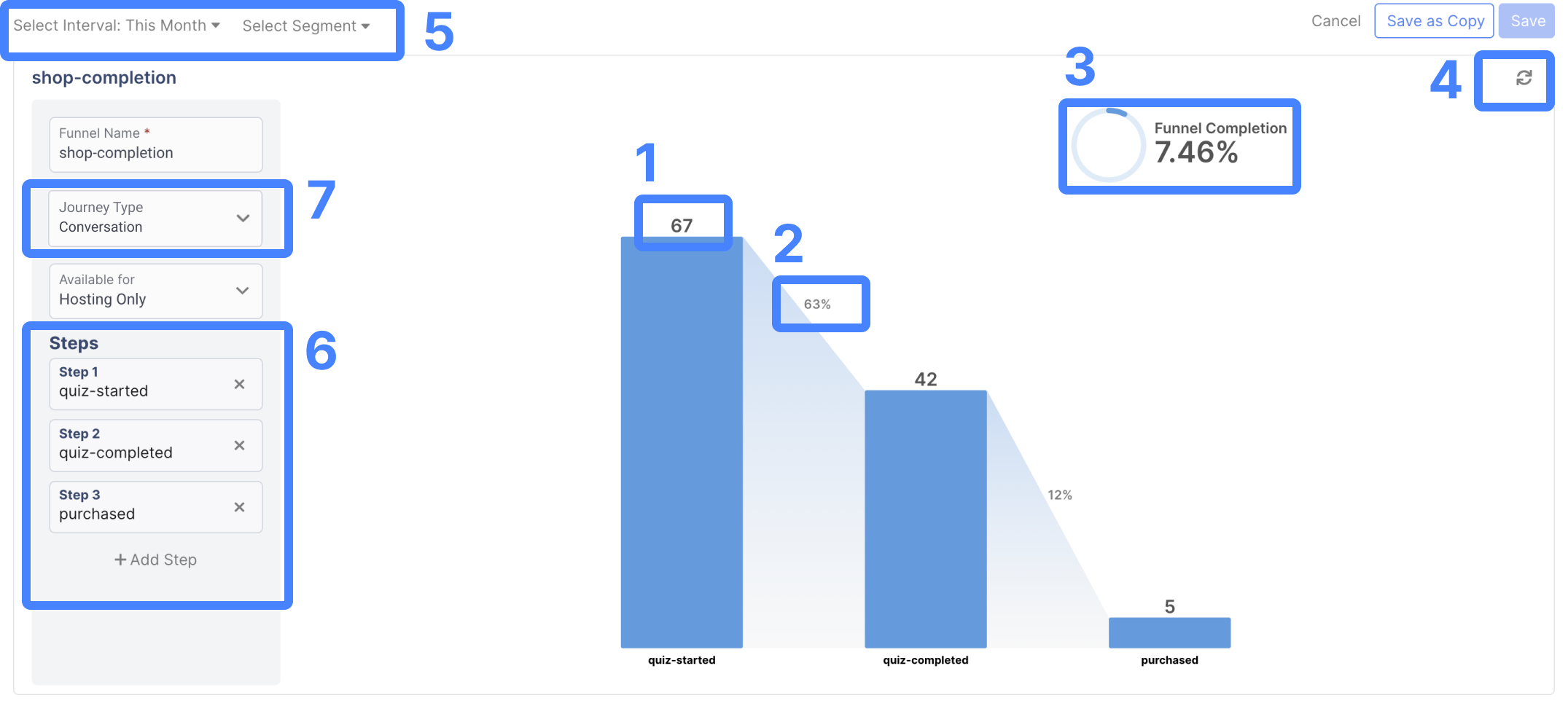
Funnels are made up of a couple key components:
1. Activity Count: For each Step, the number of customer journeys or conversations in which the activity defined occurred.
2. Step Completion Percentage: For each transition between Steps, the percentage of customer journeys or conversations in which the defined activity activity occurred compared to the number from the previous Step.
3. Funnel Completion: The upper right corner shows the overall completion of the Funnel - that is, the percentage of journeys that completed the final Step as compared to the first Step.
4. Refresh: A refresh button available in the upper right corner that can be used to fetch new data when using a time interval that includes the current date/time.
5. Time Interval and Segment: Each Funnel can be generated for a selected time Interval and for a particular Segment by using the drop-down filters at the top.
6. Steps: The individual steps that make up a funnel, these are covered in great depth below.
7. Funnel Type: Funnels can be either Customer funnels or Conversation funnels, the differences between the two are explained in the funnel types section below.
Event data only exist in production tenants after May 1, 2022. When a time period is selected that includes any range prior to this, a warning is displayed.
Drilling down on Funnel Steps
Details about the customers and conversations can be viewed for each Step of the Funnel. Selecting the blue bar for any Step (with a count higher than 0) in the Funnel chart will open a Details dialog:

The Details Dialog will list the customers who completed the Step. The customer’s name (if available), the platform and the Contact Point of the interaction are included.
Selecting a customer or conversation listed on the left side will open the Transcript details on the right side.
Reviewing drop-off
Additionally, clicking the light blue section between two funnel steps will provide a list of the Details list of those who dropped off after completing the previous Step. A “drop-off” is a journey that was counted in the previous step, but not in the next step:
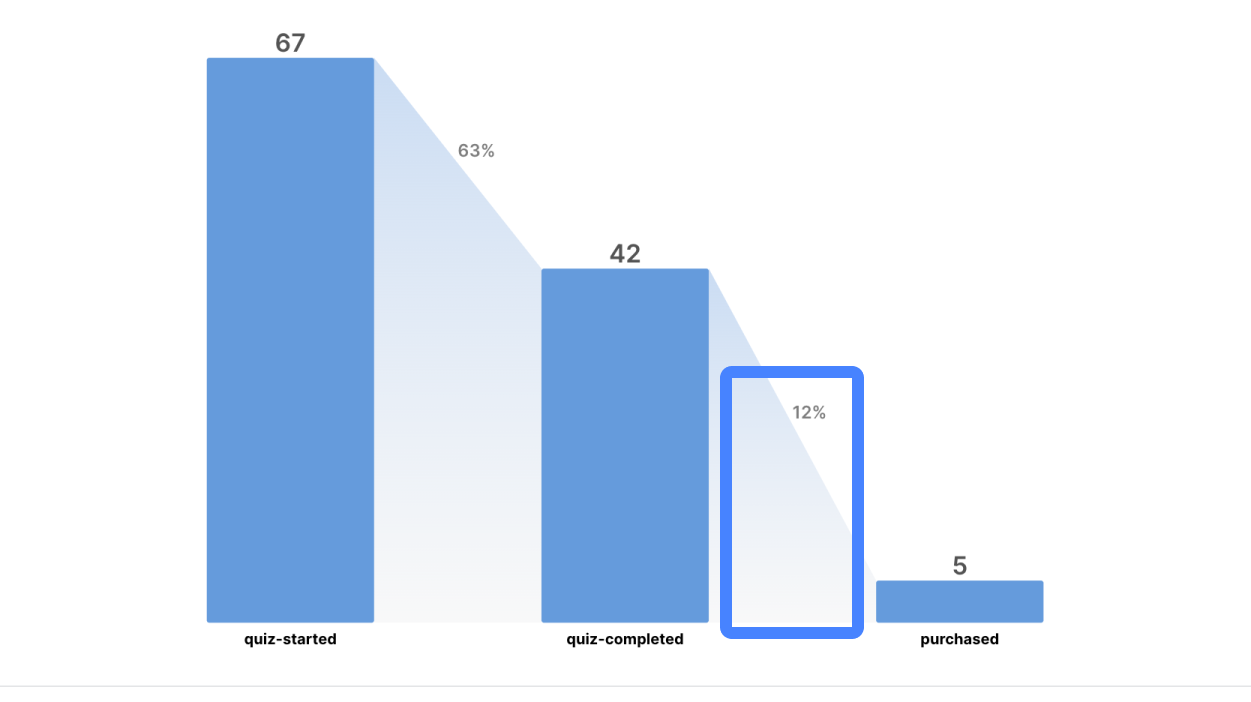
Funnel Types
Funnels can be setup to either look at Customers or Conversations, you can easily switch between the two different options once you've created your funnel.
-
Use a Customer Funnel option if you want the Funnel to count customer journeys that performed a certain set of activities.
-
Use a Conversation Funnel option on the right if you want to count the individual conversations that performed a certain set of activities.
Customer Journeys reset after 21 days if the customer does not stay active. When using a date range greater than 21 days a single customer may be double counted.
Creating a New Funnel
Administrators are able to create new and edit existing Funnels. Note that managers can view funnels created by an administrator if given access, but cannot edit existing nor create new ones. A new Funnel can be created by selecting the New Funnel button at the top of the Funnel list. Upon clicking create new funnel, users have the option to choose from an existing Funnel template, or create a Funnel from scratch:
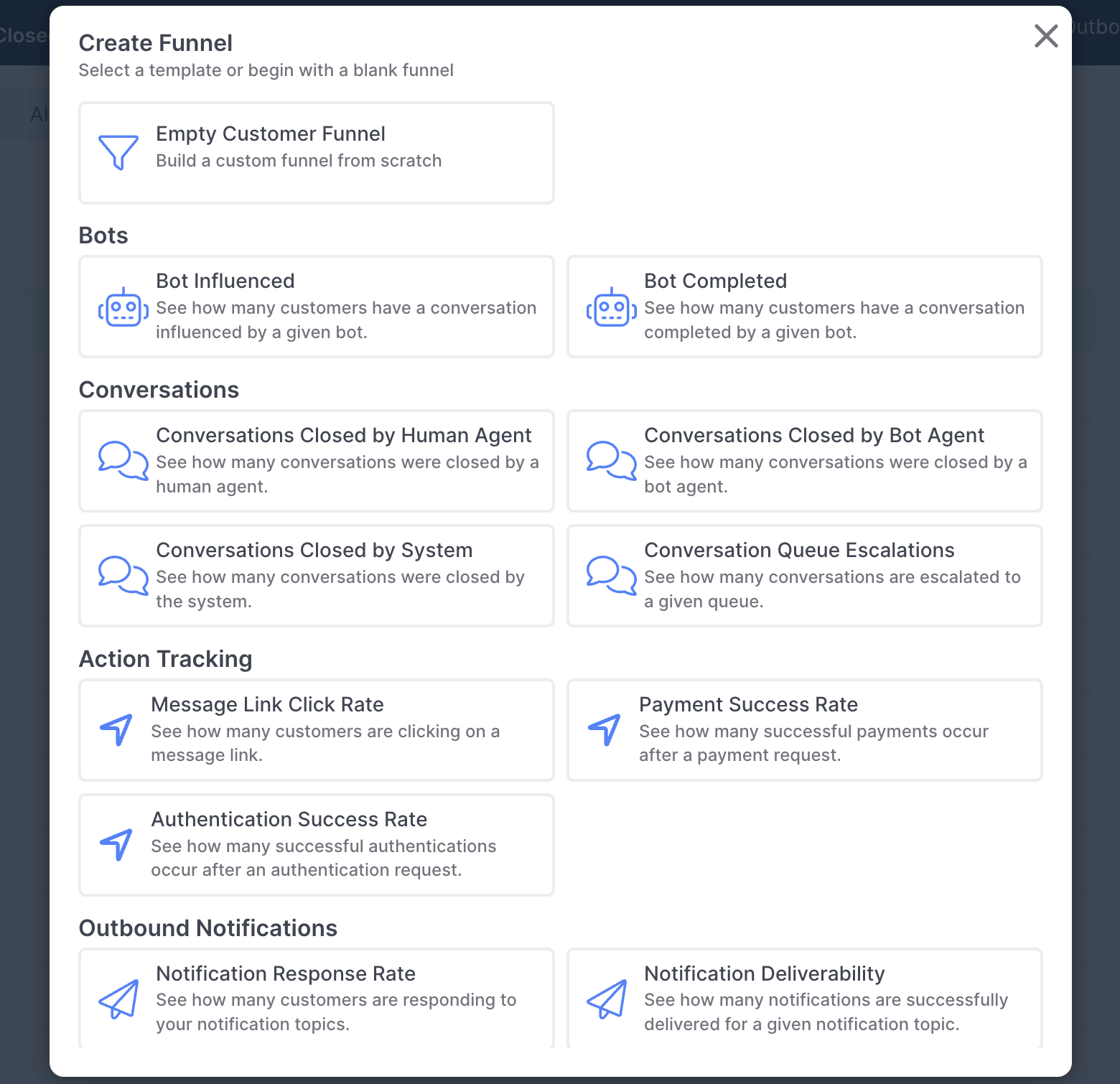
Using a Template
Different templates require different amounts of configuration; some will open up the funnel editor with no additional configuration needed, while some may require you to provide additional input, for example a template for Outbound Notifications may ask you to select a Topic:
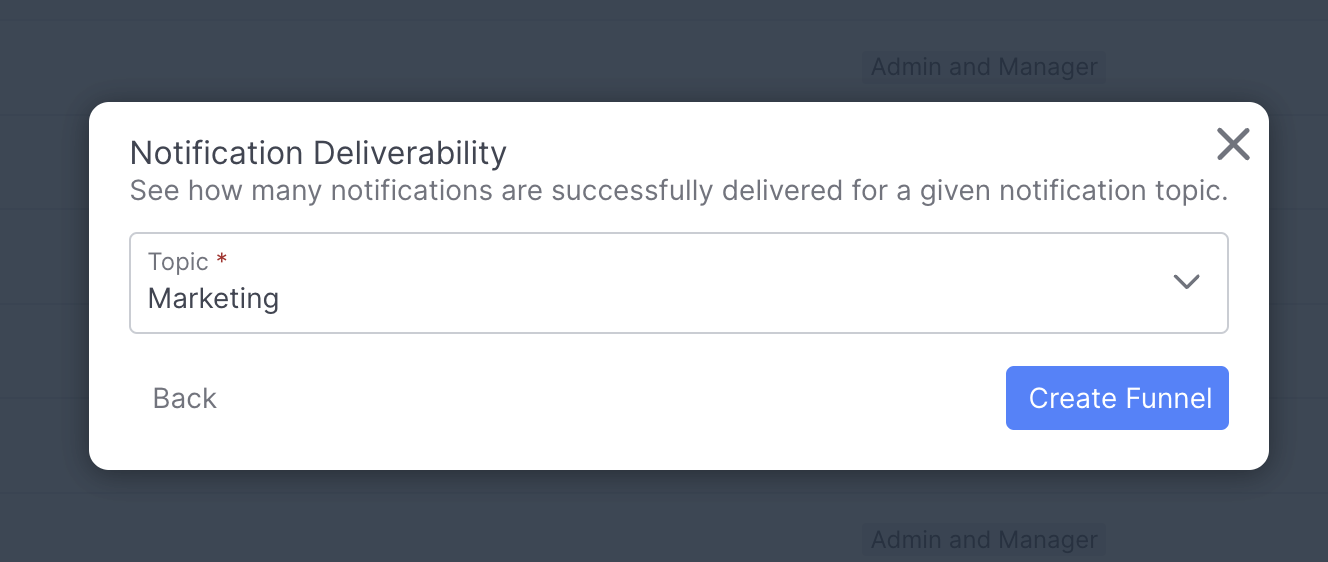
Once the required information is provided for the Funnel template, you will be taken to the detailed view for that Funnel, where it can be further edited or saved.
Creating a Blank Funnel
Selecting Empty Funnel will take you to the Funnel editor, where you can build from scratch:
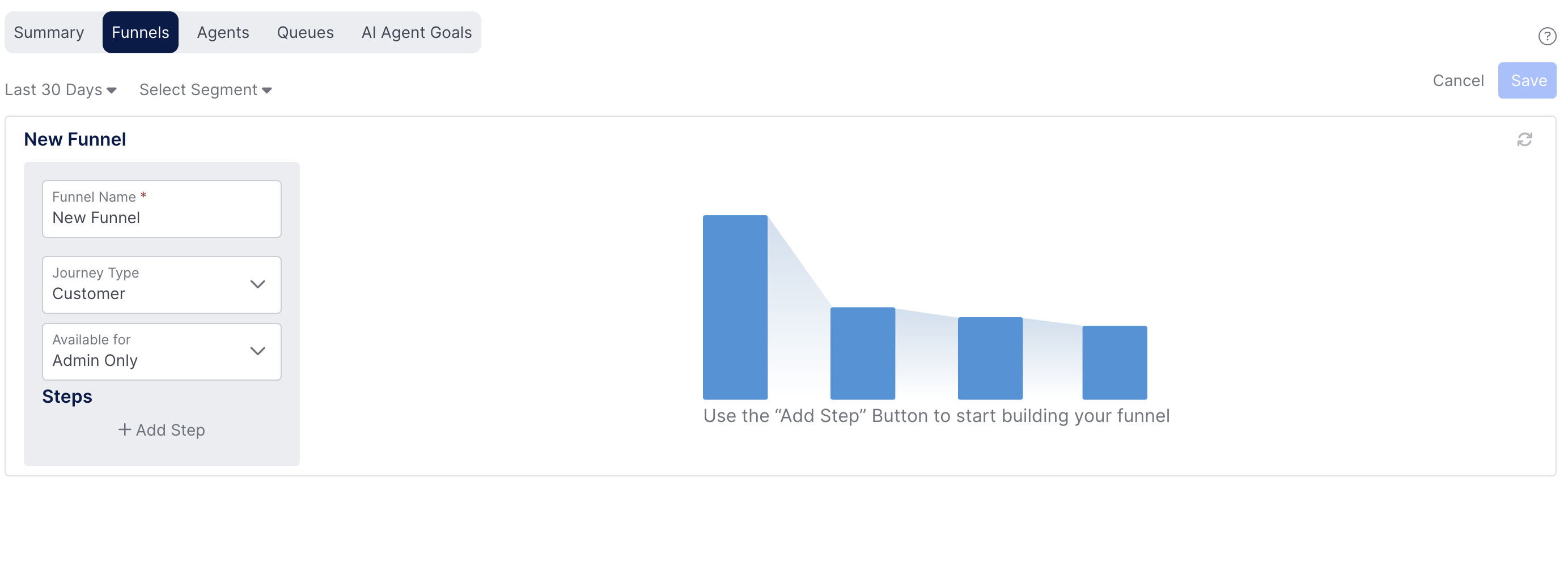
-
Funnel Name: The name will be used to display the Funnel in the list. Make sure to name it something to make it identifiable from other Funnels in the list.
-
Journey Type: Identifies if the Funnel is configured to count Customer or Conversation journeys. This can be modified at any point.
-
Available For: Provides the list of roles for which users should be able to open the Funnel. You must include your role. E.g. a Manager cannot set the Available For to Admin Only.
-
Steps: Used to configure new and previously configured Steps in the Funnel.
Creating and Editing Funnel Steps
Funnels are comprised of a series of steps, each step will show as a bar in the displayed Funnel Chart and represent the customer or conversation journeys that did the actions defined in the Step Filter.
Selecting the +Add Step button will open the Step Editor:
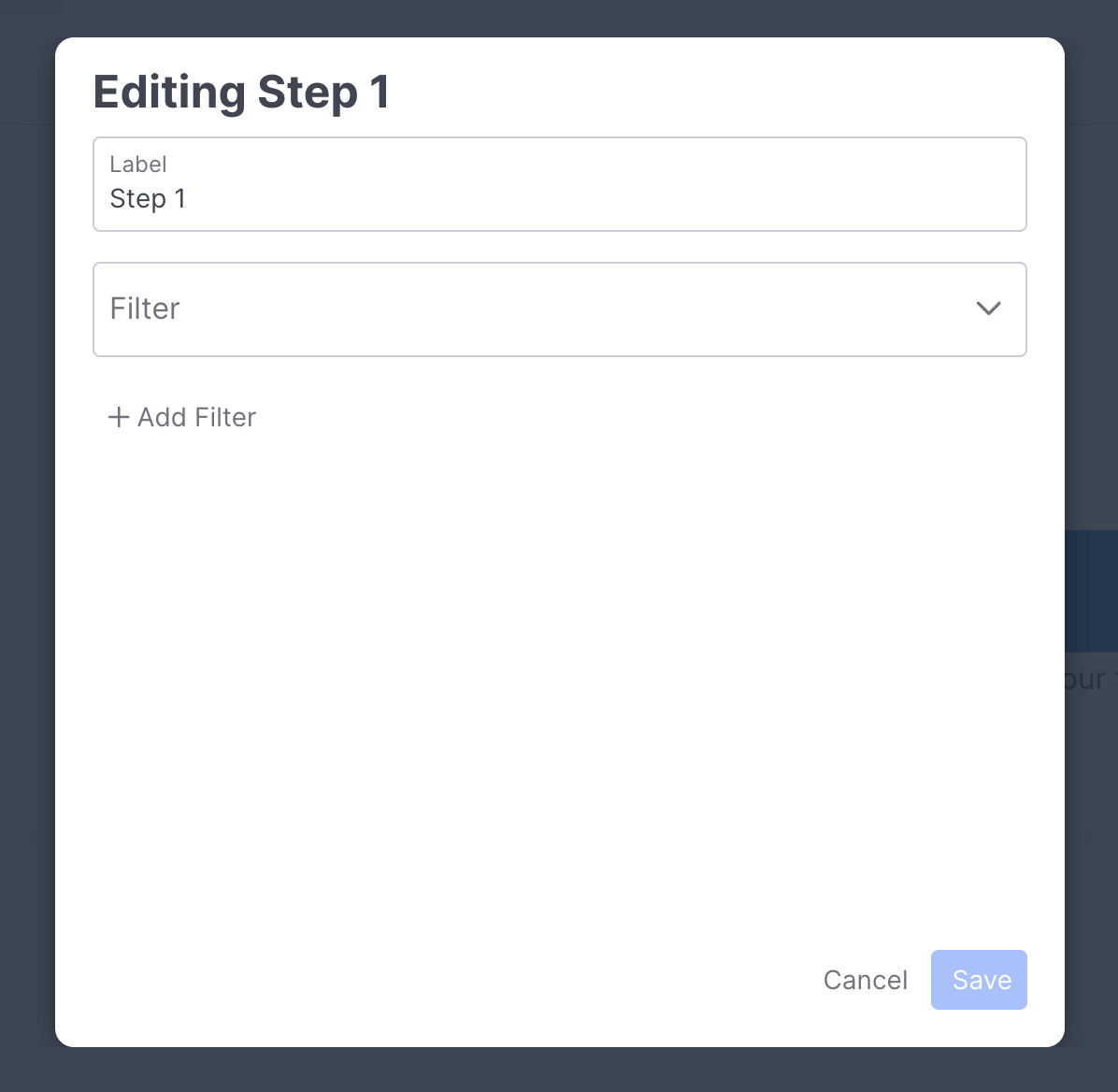
Label: The label that appears at the base of the Funnel Chart. These may be truncated when displayed so use text that characterizes what the Step is showing at the beginning of the Label.
Filter: The filter is used to identify the type of event that occurred.
The Label will automatically be set to the name of the event selected for the Filter - but it can be changed as deemed appropriate.
A Step must have a Filter defined before it can be saved.
Step Locations
Using the +Add Step button will always add the new step at the end of those already configured.
Steps can also be added before a previously configured step, hover the mouse over the area in the location you want to insert a new step and the background will show a darker color and a Insert Step tooltip will appear. Clicking here will open the Step Editor and when saved, the Step will be added in the specified location.
Steps can be reordered by dragging and dropping a step to a new location.
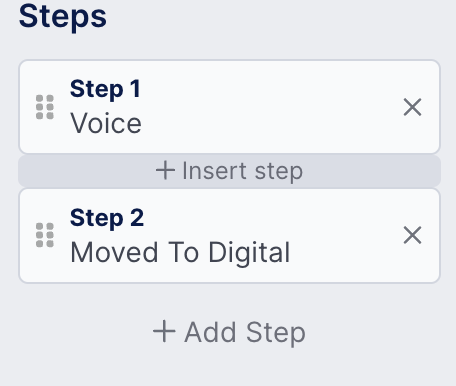
Remember that each Step will only be counting the journeys that also performed the events in the filters of previous Steps.
For example, if Step 1 is counting the customers who had a conversation closed in the selected time frame, and Step 2 is configured to count the customers who completed a survey in the selected time frame, the counts displayed for Step 2 on the Funnel Chart will be showing those that completed a survey AND had a closed conversation in the timeframe.
Additional Filters can be added to a single step. This can be used to say that either of the defined Filters needed to have occurred in order for the journey to be counted.
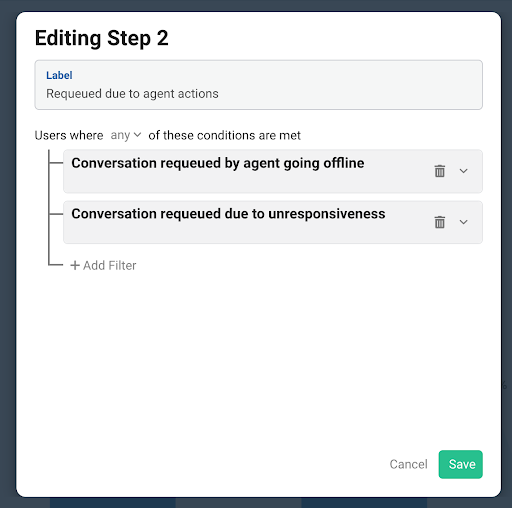
Example Events for Step Filters
The following table shows some of the events that are available for use when creating Step Filters, this list is not comprehensive and is meant to give an idea of some of the events available within Funnels:
| Name | Description |
|---|---|
| Authentication successful | Occurs when a contact successfully authenticates |
| Bot location changed | Occurs when a conversation changes location within a Quiq bot |
| Conversation assignment changed | Occurs when the queue or owner of a conversation changes |
| Conversation ended | Occurs when a conversation ends |
| Conversation promoted | Occurs when a conversation is promoted from one platform to another |
| Conversation started | Occurs when a conversation starts |
| Conversation status changed | Occurs when the status of a conversation changes |
| Global button clicked | Occurs when a global button is clicked |
| Message button clicked | Occurs when a message button is clicked |
| Message link clicked | Occurs when a tracked link is clicked in a message |
| Message link sent | Occurs when a tracked link is sent on a message |
| Notification status changed | Occurs when the delivery status of a notification changes |
| Opt out status changed | Occurs when a contact changes their opt out status |
| Page viewed | Occurs when a contact changes pages |
| Payment completed | Occurs when a contact completes a payment |
| Survey question answered | Occurs when a contact responds to a survey question |
| Survey solicited | Occurs when a survey has been sent to a contact |
| Survey taken | Occurs when a contact responds to one or more survey questions |
Other events are available in the Filter selection list as well. These are basically short-cuts to the above list of base events with additional constraints added automatically.
For example, the following list of specific types of re-queued events are listed individually but are really short-cuts to the Conversation assignment changed event:
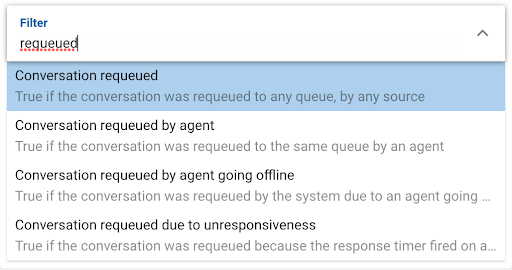
Available Events and Funnel Types
Some events may not be available based on the type of Funnel created.
For example, if a Conversation Funnel is created, events about Notifications aren’t available for selection since a Notification is not part of a conversation journey.
If a Funnel is changed to a type where some events are not supported, there will be a red warning icon next to the Step that contains those events:

Opening up the Step will provide additional detail on the unsupported event:
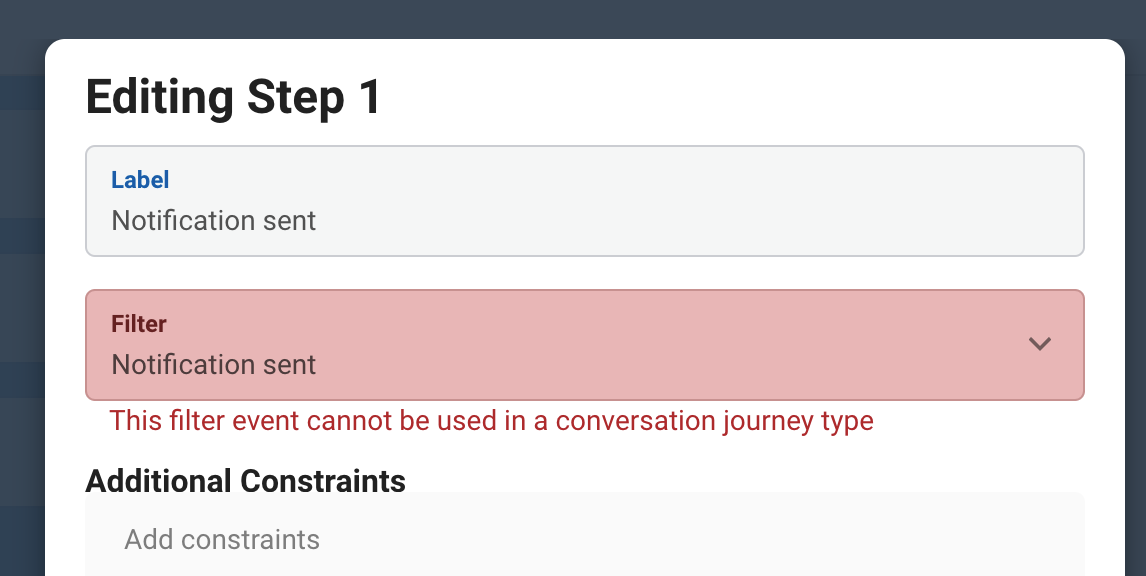
Filter Constraints
Once an event has been selected for a Step Filter, Additional Constraints may be added. Additional constraints are used to add details about the type of event you want to count. Selecting the Add constraints button will open the Edit Condition dialog to set the contextual information.

The list of fields for available constraints conditions varies by the type of event selected for the Step Filter.
On balance the list will include general information about the context of the conversation when the event occurred, like the Contact Point or assigned Queue when the event occurred as well as customer and conversation custom fields.
Some constraints are event specific. If the event was Survey solicited, then a constraint can be added to specify which survey was solicited:
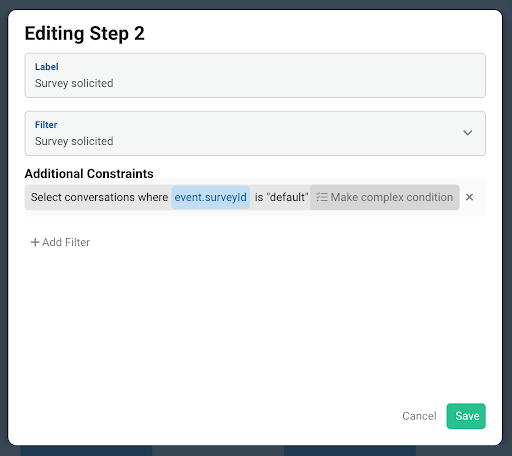
Multiple constraints may be added by selecting the Make complex condition button. This allows the configuration of multiple constraints to be ANDed or ORed together - just as Conditions work in other parts of the Quiq Admin UI when defining Decisions in Conversation Rules or the Bot Designer.
Window Width
Below each funnel is a Window Width control which lets Admins select the timespan in which all funnels steps must be completed. The default window width is 24 hours.

Available Templates
The following templates are available when creating a Funnel:
AI Agents
- Bot Influenced:See how many customers have a conversation with a given AI Agent.
- Bot Completed: See how many customers have a conversation that ended with a given AI Agent.
Conversations
- Conversations Closed by Human Agent: See how many conversations were closed by a human agent.
- Conversations Closed by Bot Agent: See how many conversations were closed by a bot agent.
- Conversations Closed by System: See how many conversations were closed by the system.
- Conversation Queue Escalations: See how many conversations are escalated to a given queue.
Action Tracking
- Message Link Click Rate: See how many customers are clicking on a message link.
- Payment Success Rate: See how many successful payments occur
after a payment request. - Authentication Success Rate: See how many successful authentications occur after an authentication request.
Outbound Notifications
- Notification Response Rate: See how many customers are responding to your notification topics.
- Notification Conversation Start Rate: See how many customers are starting a conversation after a notification.
- Notification Deliverability: See how many notifications are successfully delivered for a given notification topic.
- Notification Opt-outs: See how many customers are opting out for a given notification topic.
Surveys
- Survey Response Rate: See how many customers are responding to a given survey.
Updated about 2 months ago
